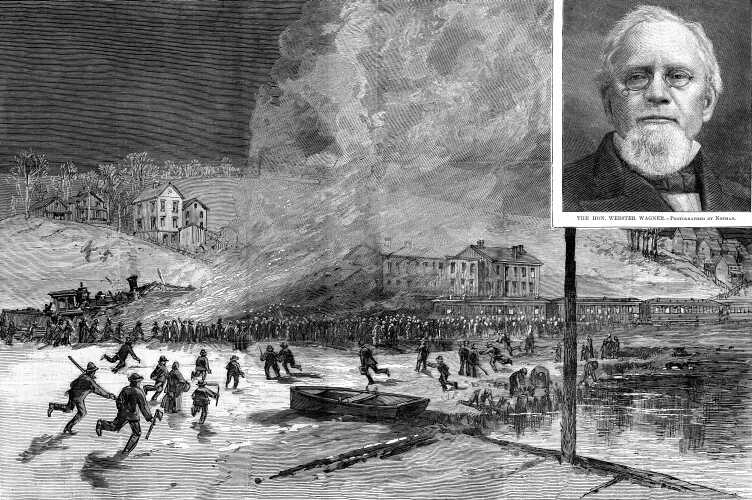|
||||||
  
 | ||||||
|
THE LATEST RAILROAD DISASTER.
ON the preceding page will be found an illustration of the terrible railroad disaster which occurred on the evening of the 13th of January in the deep cutting at Spuyten Duyvil, where the tracks of the Hudson River road curve to the eastward. The disaster appears to have been the result of inadequate precaution or of criminal carelessness. From the detailed accounts of this deplorable affair it is evident that either the flagman sent back to warn the train approaching from Tarrytown failed to perform his duty, or that the engineer of that train was not on the look-out while rushing at a high rate of speed through a winding cut, where in some places it is impossible to see more than a hundred feet ahead. A proper system of signaling in that dangerous locality would have prevented this calamity, and saved the lives which have been sacrificed to the parsimony of a great and wealthy corporation. No one can read unmoved the narratives of those who survived, and who were the helpless spectators of the awful suffering endured by those who were unable to escape from the burning cars. Within a few feet of water, there were no buckets on the train, and it was pitiful to see handfuls of damp snow flung on the flames in sheer desperation. There were no axes at hand to cut open the burning cars. It seems probable that nothing could have saved the life of Senator WAGNER; but the newly married couple who perished side by side, and others who vainly struggled to escape, might have been rescued had the means been at hand. And but for the wretched and criminal parsimony of the company in heating the cars with stoves, the train would not have taken fire. By the death of Senator WAGNER the community loses an excellent man, an energetic and useful legislator, who had worked himself up from comparative poverty to a position of great wealth. To him we owe the system of sleeping and palace cars which is one of the distinguishing features of American railroads. The first sleeping-car designed by him was put on the Utica and Schenectady road in the fall of 1858. It cost only $3000, but was then considered a wonder of comfort and elegance. Compared with those now in use, it would look singularly bare and unsubstantial. Senator WAGNER'S Legislative career began in 1871, when he was elected to the Assembly. He afterward served several terms in the State Senate, of which he was a member at the time of his death. His residence was at Palatine Bridge, the town where he was born in 1817, and where he had passed his life.
Railroad Accidents | Contents Page
This page originally appeared on Thomas Ehrenreich's Railroad Extra Website
|
||||||
|
|
|
|||||




